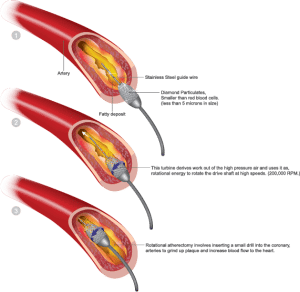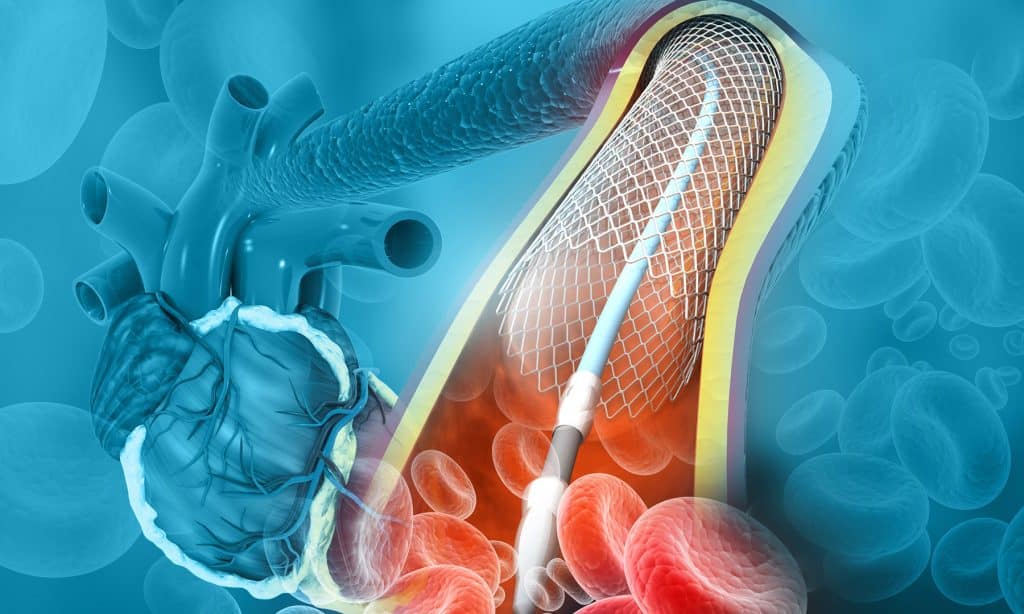Until recently, balloon angioplasty or stents were the go-to treatment for peripheral artery disease. However, today atherectomy is available. It successfully clears blocked arteries. Helping patients to return to an active lifestyle more quickly.
What is Atherectomy?
Atherectomy is a catheter-based procedure used to remove plaque buildup in the arteries. Your doctor may recommend an atherectomy if angioplasty and stenting fail to clear a blockage in your arteries.
Atherectomy is a less invasive way of restoring blood flow than open-heart bypass surgery or lower-extremity bypass surgery. Dr. Ayar is an atherectomy expert, with extensive experience and advanced training in this procedure.
How Is Atherectomy Performed?
Before the procedure, you will receive a mild sedative through an IV. Then the surgical team will administer a local atheistic to the procedure site. In performing an atherectomy, a doctor uses a needle to make a small incision in the skin. Then inserts, a tapered tube called a sheath into an artery in the arm or groin. A catheter is then inserted through the sheath into the blood vessel. This is guided by an imaging method called fluoroscopy.

The next step depends on the type of atherectomy performed. Your doctor may use a laser to vaporize the blockage or a sharp blade to remove the plaque.
If the artery is blocked, the doctor may insert a stent to ensure the artery remains open. When the revascularization is complete, the doctor removes the catheter and sheath and closes the opening in the blood vessel.
Atherectomy carries the same minimal risks as other minimally invasive procedures. However, it is the only technique that actually removes plaque from the vessel. Some patients report feeling pressure or pushing sensations during the procedure, but typically no pain is reported.
What Happens After The Procedure?
After an atherectomy, you must lie flat for up to six hours to prevent bleeding. Healthcare providers will monitor your blood pressure, pulse, and heart rate while you recover.
Patients walk between 6 to 24 hours after the procedure. Normal activity can typically resume within 24 to 48 hours.
Are There Advantages To Atherectomy?
There are many benefits to choosing an atherectomy as treatment for peripheral artery disease. Atherectomies are especially recommended when angioplasty and stenting are not possible. This can occur when the blockage is in a particularly difficult-to-reach location or is too hardened or severe to be flattened with the angioplasty balloon or stent device alone.
The advantage of this procedure is that your doctor makes just one small puncture to get into your artery. Additionally, the procedure takes just a couple of hours.
Atherectomy is not ideal for every PAD patient. Your doctor can evaluate and recommend treatment according to your individual health needs.
Are There Any Risks Of Complications?
Atherectomy usually has no complications. However, as with any surgery, there is a risk of complications.
Sometimes, as a healthcare provider scrapes away plaque, a piece can break off and become lodged or stuck in a smaller downstream blood vessel. The atherectomy procedure can also cut too deep and create a tear or hole in your blood vessel.
An unusual complication of atherectomy is the re-blockage of the artery (restenosis). This occurs more often with patients that smoke cigarettes. Your doctor will discuss the recommended procedure’s risks and potential benefits with you.
How Long Does It Take To Recover?
Atherectomy is usually an outpatient procedure, meaning you can go home the same day. You may spend one day in the hospital. Your healthcare provider lets you know what to expect based on your situation. Most people are able to resume their typical activities a few days after their procedure. However, everyone’s situation is different, so ask your healthcare provider when you can return to your routine.
Coastal Vascular Center Specializes In Peripheral Artery Disease Treatment
To determine if you’re a good candidate for atherectomy, consult an interventional radiologist or vascular surgeon in your area. Especially one that specializes in treating PAD to discuss your diagnosis and potential treatment. PAD treatment options vary based on the specifics of your individual case, and it’s important to begin treatment as soon as possible.
If you have questions, please call Coastal Vascular Center Today!



